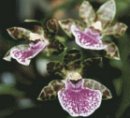 |
| BOT 3800 Sample Quiz 2 | |||
| 1. Which cotton is least resistent to boll weevil attack: (A) Upland, Gossypium hirsutum, (B) Sea
Island, G. barbadense, (C) Old World, G. herbaceum.
2. The concept that different cultures separately found out about the economic importance of the same plant is called: (A) diffusionism, (B) dioecism, (C) inventionism, (D) communism, (E) lucky, (F) monocarpy. 3. Which best describes the standard floral system in Cannabis: (A) bisexual with stamens and pistils in same flower, (B) unisexual flowers with both sexes on the same plant, (C) unisexual flowers with each sex on a different plant. 4. The commercially important hair of cotton is called: (A) gin, (B) lint, (C) fuzz, (D) boll, (E) shag. 5. Botany Bay was an area of great botanical diversity (i.e., new plants to science) found in: (A) Jamaica, (B) Tahiti, (C) Australia, (D) Brazil, (E) Galapagos Islands, (F) Florida, (G) Sweden. 6. The abbreviation for the psychoactive chemical in Cannabis is: (A) LSD, (B) ATP, (C) FBI, (D) THC, (E) IDK, (F) FSU,(G) Y2K. 7. The Maori word “kumara” refers to: (A) wheat, (B) cotton, (C) sweet potato, (D) cloves, (E) cinnamon, (F) breadfruit. 8. Plant size in Cannabis sativa is generally-- (A) smaller than, (B) equal to, (C) larger than-- plant size in Cannabis indica. 9. Major world exploration was encouraged through man’s search for gold and: (A) lumber, (B) fruits, (C) fibers, (D) medicines, (E) spices, (F) vegetables. 10. Commercially important, tetraploid cotton most probably originated in: (A) Persia, (B) Egypt, (C) northern South America, (D) southern China, (E) South Africa, (F) India, (G) western Australia. 11. Which of the following was apparently taken from culture to culture from South America throughout much of the South Pacific: (A) mulberry, (B) hemp, (C) sweet potato, (D) baobab, (E) Agave, (F) peanut, (G) date palm. 12. Cannabis was most probably native to: (A) North America, (B) Andes Mtns, (C) South Africa, (D) Afghanistan-India, (E) Turkey-Lebanon, (F) Arabia. 13. Best possible example of pre-Columbian diffusionist agriculture between the Old and New World is: (A) cotton, (B) cloves, (C) date palm, (D) hemp, (E) wheat. 14. The psychoactive substances in Cannabis are most concentrated around: (A) male leaves, (B) male stems, (C) roots, (D) female flowers, (E) female stems. 15. Myrrh is closely related botanically to: (A) cinnamon, (B) frankincense, (C) cloves, (D) sweet potato, (E) cotton, (F) hemp. |
|||